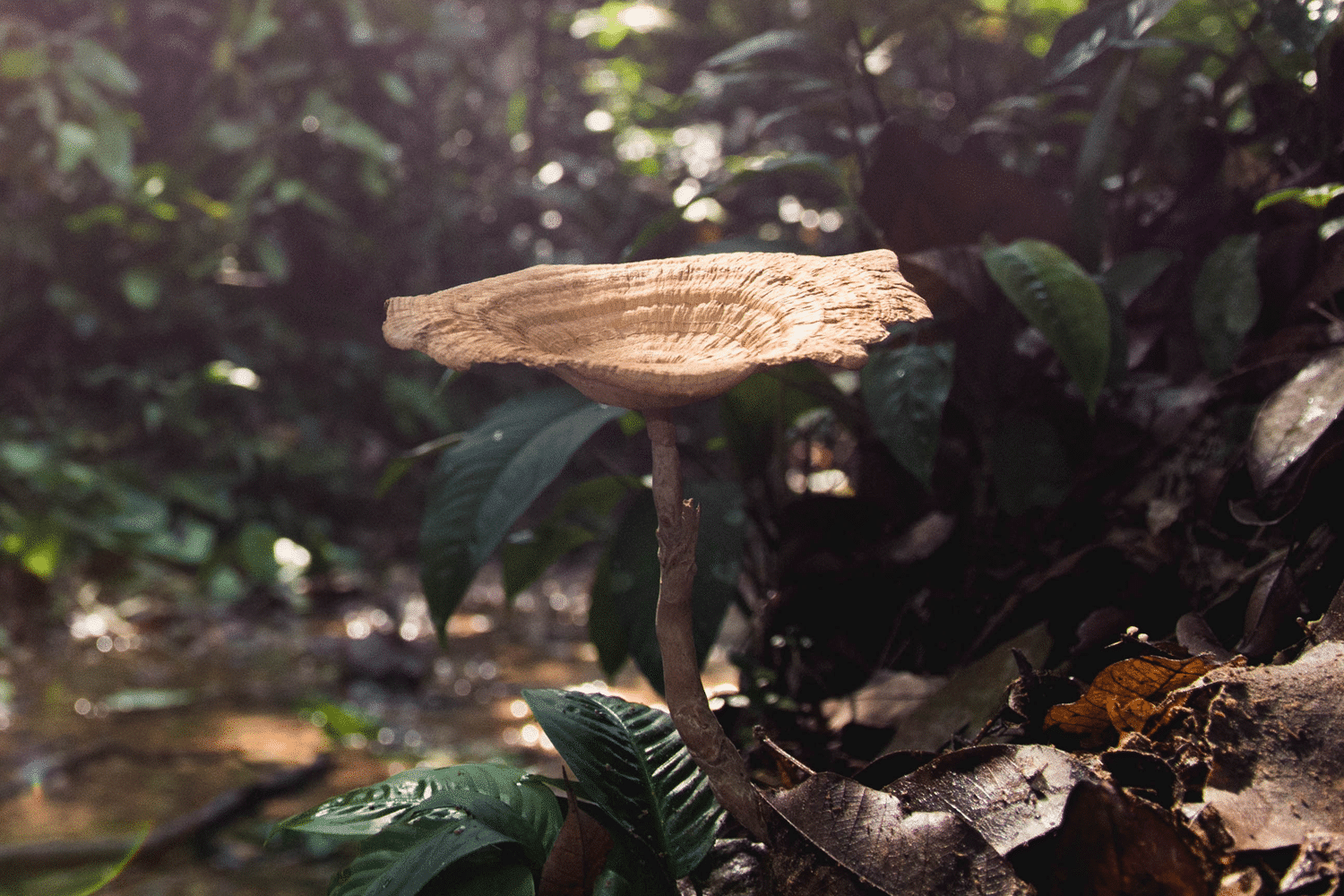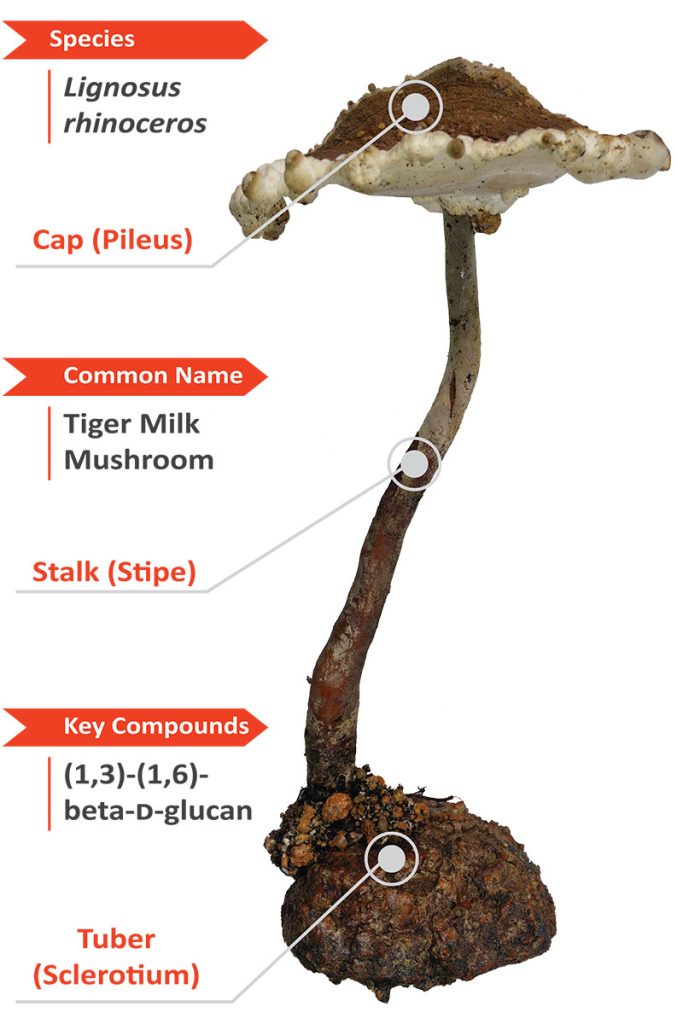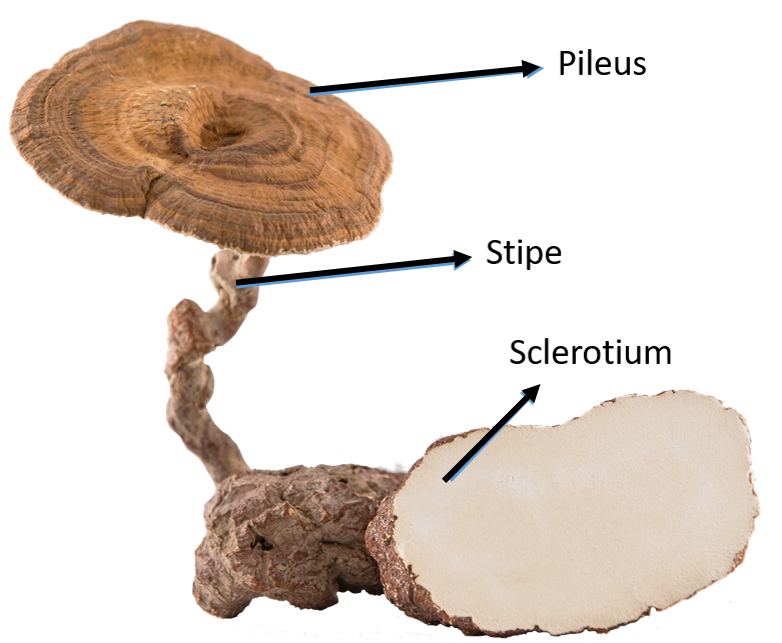Huh? Tiger Milk Mushroom?

A brief introduction
Let’s start with the name, shall we? Contrary to popular belief (shocking, I know), Tiger Milk Mushroom or TMM for short, does not indeed grow near tiger habitats. According to folklore, its name is apparently derived from the fact that this mushroom grows whenever drops of tigers’ milk fall onto the ground when feeding its cubs (hmm, seems like I wasn’t too far off, was I?). Found to be a native in tropical rainforests of Southeast Asia, including Thailand, Malaysia, The Philippines, Indonesia and parts of Australia, this underground fungus has been traditionally used by Aborigines and the indigenous community to treat various health ailments [1].
Scientifically known as Lignosus rhinocerotis/L.rhinocerus, TMM does not grow in clusters like most of its fellow mushroom species. Rather, they tend to grow solitarily and that too, only one stalk of it at a time within a 5km radius. If you’re looking out for this when on a jungle hike or something, be sure to see one that has not fruited yet since TMM’s medicinal properties only arise from its underground tuber or sclerotium.
Anyways, let’s get to the good part. “What’s so special about TMM? Is it like one of those psychedelic mushrooms?” I’m afraid that I’ll have to disappoint you. It is most definitely not a magic mushroom but it does contain multiple health benefits, which comes pretty close as the next best thing, no?

Prominent benefits of TMM
Its sclerotium extracts are particularly beneficial for asthmatic patients or simply to those with respiratory conditions (Chronic cough, Bronchitis, COPD etc). The anti-asthmatic and anti-inflammatory effects of TMM have been proven through several scientific studies. A study on asthmatic rats given TMM extracts showed improvement through an increase in T-helped typer 2 (TH2) cytokine levels that lead to production of Immunoglobulin E (IgE) which are antibodies that help to mediate allergic reactions [2].
TMM also has natural anticoagulant and fibrinolytic properties as demonstrated by a 2014 study [2]. Fibrin aggregation in the blood tends to lead to blood clots (thrombosis) which is a plausible cause of cardiovascular diseases. While there are many thrombolytic agents available to treat thrombosis, bleeding is one of its unwanted side effects. Hence, research on alternatives such as mushrooms are what lead to the discovery of TMM [3] possessing protease-like fibrinolytic enzymes in its crude extracts. Though more research is underway, the current evidence seems to highlight it as a possible alternative to thrombolytics.

Counteracting free radicals in the body is another prominent benefit of TMM. It’s what gives it its antioxidant properties to reduce oxidative stress that are linked to respiratory diseases such as asthma and COPD. Free radicals are unstable atoms that damage cells leading to aging and illnesses such as respiratory ailments. These are just some of the myriad of benefits that the Tiger Milk Mushroom possess. The long list also includes it being anti-proliferative, immunomodulatory, anti-obesity but a lot of research is underway to further cement the evidence of TMM being as useful as it supposedly is.
Therefore…
There is no harm in consuming TMM, provided it is within reasonable dosages and preferably after an hour or two of taking your prescription medicines. This rare but valuable mushroom is available in many consumable forms for you to take. If anything, just remember to be a vigilant customer because the last thing any of us want is to feed our body something that further deteriorates it. Speak to your healthcare provider about it if need be. You will thank yourself in the time to come.
References
[1] Nutraceuticalbusinessreview.com. 2015. Tiger milk mushroom: Malaysia’s lost national treasure. [online] Available at: <https://www.nutraceuticalbusinessreview.com/news/article_page/Tiger_milk_mushroom_Malaysias_lost_national_treasure/104531> [Accessed 28 February 2022].
[2] Nallathamby, N., Phan, C., Seow, S., Baskaran, A., Lakshmanan, H., Abd Malek, S. and Sabaratnam, V., 2018. A Status Review of the Bioactive Activities of Tiger Milk Mushroom Lignosus rhinocerotis (Cooke) Ryvarden. Frontiers in Pharmacology, [online] 8. Available at: <https://www.ncbi.nlm.nih.gov/pmc/articles/PMC5775285/> [Accessed 28 February 2022].
[3] Sabaratnam, V., Ali, S., Tieng – Tieng, K., Chiew – Pin, T., Panjavaranam, K., Yee – Shin, T., Tau – Chuan, L., Kek- Heng, C. and Muniandy, S., 2013. FIBRINOLYTIC AND ANTICOAGULANT ENZYMES OF SELECTED MEDICINAL AND CULINARY MUSHROOMS. [ebook] Kuala Lumpur: Mushroom Research Centre & Department of Biomedical Science, Molecular Medicine, University of Malaya. Available at: <https://www.researchgate.net/publication/264977421_FIBRINOLYTIC_AND_ANTICOAGULANT_ENZYMES_OF_SELECTED_MEDICINAL_AND_CULINARY_MUSHROOMS> [Accessed 28 February 2022].
The opinions expressed in the article are the writers’ own and do not reflect the view of MPS YPC.













